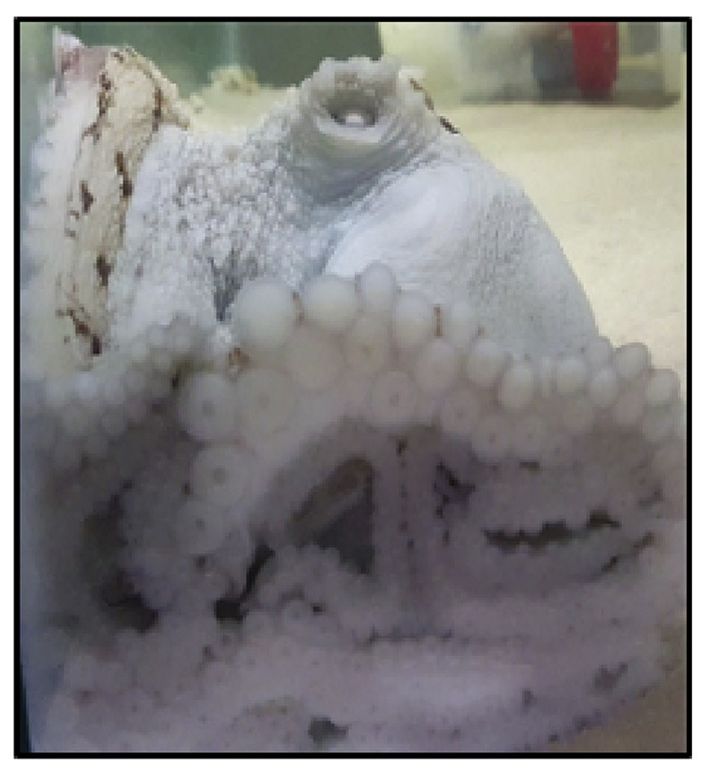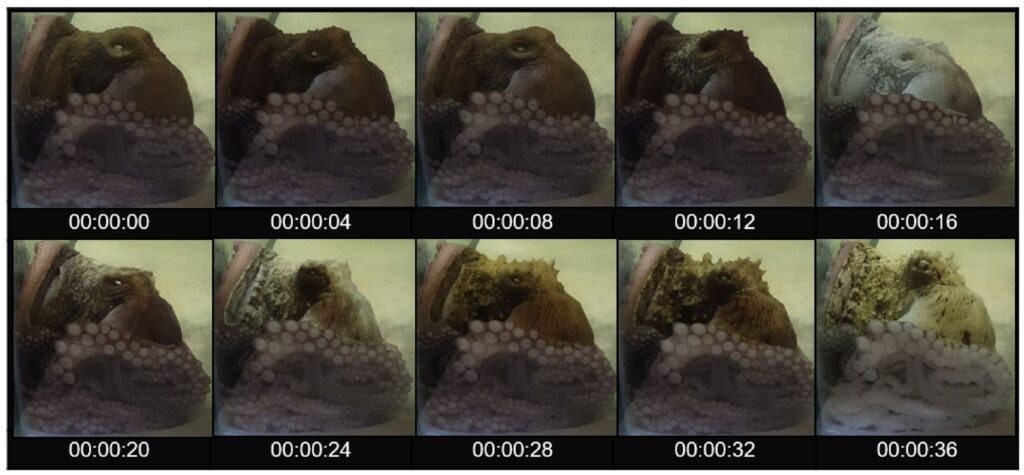Octopus insularis
Sleep in humans
Our sleep is not a time of inactivity for our brain, even though we are not conscious and are less sensitive to the stimuli from the outside world. A lot is happening, we dream and our memories are consolidated so that we can remember things longer. During the night our sleep goes through a number of sleep cycles consisting of different phases: well-known REM (rapid eye movement) sleep and a couple of stages of non-REM sleep. In non-REM sleep our brain is rather quiet and we breathe slower. One of the phases of this sleep is a deep sleep from which it is difficult to wake up. In REM sleep, like the name says our eyes move a lot, but other muscles of the body are rigid stopping us from acting out our dreams. It is rather easy to be woken up from REM sleep. In humans different stages differ also in the type of electrical activity that can be recorded at the surface of our head (EEG).
Sleep with similar phases have been also observed in mammals or even to some extent in birds and reptiles. Recently sleep phases were also described for octopuses – animals much less closely related to humans.
Sleep in octopuses
Measuring electrical activity of the octopus’s brain is complicated as they live in water and it’s difficult to attach electrodes to their head. Therefore, the researchers relied on behavioural observations. They studied Octopus insularis (closely related to the common octopus). They saw inactive states that can clearly be described as sleep, since the animals were in the resting posture (lowered head and arms curled around the body), their pupils were closed and they were less likely to react to visual or vibratory stimulus.
Interestingly, the researchers described at least two distinctive phases of sleep that repeated a couple of times during the resting period. The researchers called the two main sleep phases “Quiet sleep” and “Active sleep”.
In quiet sleep, the body of the animal was pale, pupils narrowed to a slit and its body moved only rarely and slowly.

In the active sleep the animal’s skin colour and texture changed frequently, eyes were moving, the body and the suckers were often contracting and muscles twitched. In this phase animals were less sensitive to the external stimuli.

The active sleep phase usually appeared after a longer period of quiet sleep, but it was itself really short (less than a minute) and it was usually followed by an alert state. Similar sleep stages have been also described in cuttlefish. Cycling nature of octopuses’ (and cuttlefish) sleep is similar to the human sleep cycle, even though the sleep stages differ between species.
Sleep secrets
Taking into account high cognitive and learning abilities of octopuses and cuttlefish, it is conceivable that their sleep has a similar role than that of mammals, for example in consolidating memories (but that still needs testing). Distinctive sleep stages might have special importance in the high cognitive function as they don’t seem to appear in other mollusks, less known for their cognitive abilities, like slugs and snails.
Another question is: are octopuses dreaming in the active sleep stage? I wouldn’t be surprised.
Polską wersję tego wpisu możesz znaleźć tutaj.
Cover photo of Octopus insularis from https://projeto-cephalopoda.webnode.com/especies-do-ne/octopus-insularis/

